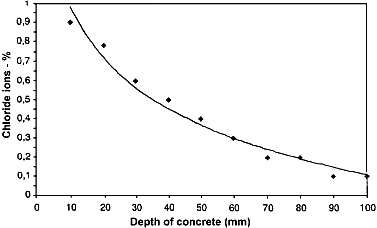Lets learn about vision boards
THE SUCCESS FORMULA
THE SUCCESS FORMULA
SIMPLE 3 STEP PROCESS
SIMPLE 3 STEP PROCESS
TM

AARYAN "SAFE BUILDING" SYSTEM
STRUCTURAL, WATERPROOFING, FIRE, ELECTRICAL, LIFTS, TANKS, PLUMBING & STP
+91-9930264726
CONCRETE TESTING
Concrete testing services range from a variety of tests designed to assess the true strength of concrete in structures. New and old, intact and damaged structures can be evaluated by these tests.

Concrete - Rebound Hammer*
(IS 13311 Part 2)
This test measures the surface hardness of concrete. For new structures, the hardness reading is used to co-relate the strength of concrete. The hammer has to be used normally on the test surface, vertically (up or down) or horizontally depending on the structural element.
Ultrasonic Pulse Velocity*
(IS 13311 Part 1)
This test is used to measure the quality of concrete by the velocity of the ultrasonic pulse. The velocities are affected by the composition of Concrete, Presence of Cracks, Voids & Other Imperfections that affect the quality of concrete. Distance/Time=Velocity. Concrete is classified as excellent, good, medium, or doubtful depending on the velocity calculated.


Compressive Strength of Core*
(IS:516)
75mm or 100mm diameter cores are taken on-site using state-of-the-art core cutting machines. A cover meter is used to locate the reinforcement steel before core cutting. This prevents structural damage to the RCC member by avoiding the reinforcement. These cores are dressed in our lab and tested using standard compression testing methods to determine compressive strength and arrive at the equivalent cube strength of concrete.
Carbonation Depth*
(BS 1881 Part 201)
When the cover concrete is carbonated the process of corrosion enhances due to the reduction in the alkalinity surrounding the reinforcement bars. The estimation of carbonation depth thus helps in predicting the period of protection from corrosion.


Half cell potential*
ASTM C876-91
Half cell potential test determines the probability of corrosion activity taking place at the point in the Reinforcement. A higher probability means more chances of corrosion. This test measures the probability and not the extent of corrosion.
Cover Depth Measurement*
This test measures the distance between the surface and the rebar. Used to determine the spacing between rebars and the concrete cover, this is an important test for in-situ quality control.


Reinforcement Mapping
Grow Your Business
This method is used to assess the reinforcement bar diameter and spacing of main bars and stirrups. For new structures, it can be used to determine the exact usage of steel. In old buildings, this is used to gather information on the reinforcement, not available or otherwise. This information is then used to prepare the structural drawings as constructed.
Ph Chloride and Sulphate Tests
(IS 456:2000)
To check conformity to IS 456:2000, these tests are designed to measure the PH value of concrete and determination of sulphates and chloride content in concrete. Samples collected on-site are transported to the laboratory for further processing.


Chloride Profile Test
Chloride concentration vs depth
Using sophisticated onsite and laboratory methods, the chloride content is plotted against depth. This gives an indication of the extent of chloride content across the structural member.
DTA TGA
Assess the fire damage to concrete
Loss of strength due to fire is assessed with these tests. They form an important input to decide if the structure can be repaired or needs to be demolished and reconstructed.
